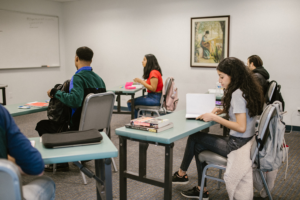Increased Financial Aid Can Increase Demand for Basic Needs Services
A new survey from New Mexico shows that nearly 60 percent of students are food insecure. Experts say that number likely rose when the state’s free-tuition program made college more accessible for low-income learners.

In the fall of 2019, after years of declining enrollment, higher education institutions in New Mexico were seeking a new way to attract adult learners in the hopes of matching the state’s peak head count of around 154,000 postsecondary students, last achieved in 2010.
A year later, the state made great gains toward doing just that after establishing an expanded college promise program—the Opportunity Scholarship.
Unlike the state’s existing aid program, which was established in 1996 and provides free tuition for recent high school graduates, the opportunity grant has no age or income requirements, making it available to returning adults as well as undocumented immigrants. And it has led to a significant uptick in enrollment: Since fall 2022, the state’s total number of college students has grown by nearly 7 percent.
The boost in aid has increased accessibility for low-income students, who also tend to require more support services to ensure college doesn’t come at the cost of their basic needs.
And a high share of the state’s postsecondary students are already struggling to fulfill their basic needs; according to a 2023 survey of more than 13,500 students, faculty and staff, funded by the Governor’s Food Initiative and the New Mexico Higher Education Department, nearly 60 percent of students were experiencing food insecurity and 62 percent lacked secure housing.
“This study points to a real crisis,” said Sarita Cargas, an associate professor of human rights at the University of New Mexico and co-author of the report. “Colleges are getting more students and they don’t have the resources to support them … It’s an equity issue.”
Addressing this gap should not only be a matter of moral concern for colleges, Cargas added, but a matter of sustainability in an era when student outcomes are increasingly important.
“There’s been a big push to get minorities in higher ed since the ’70s, and we’ve done a tremendous job bringing students of color and low-income students into higher ed,” she said. “But we haven’t done a tremendous job retaining them.”
